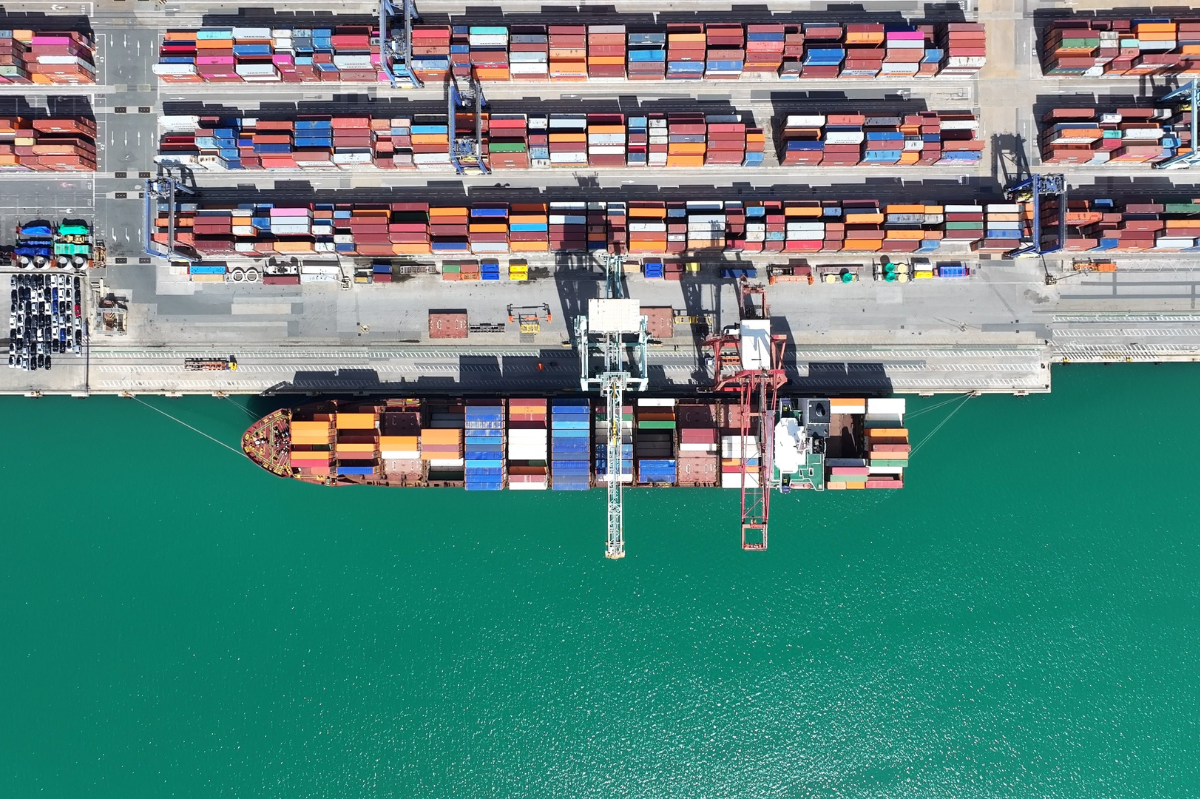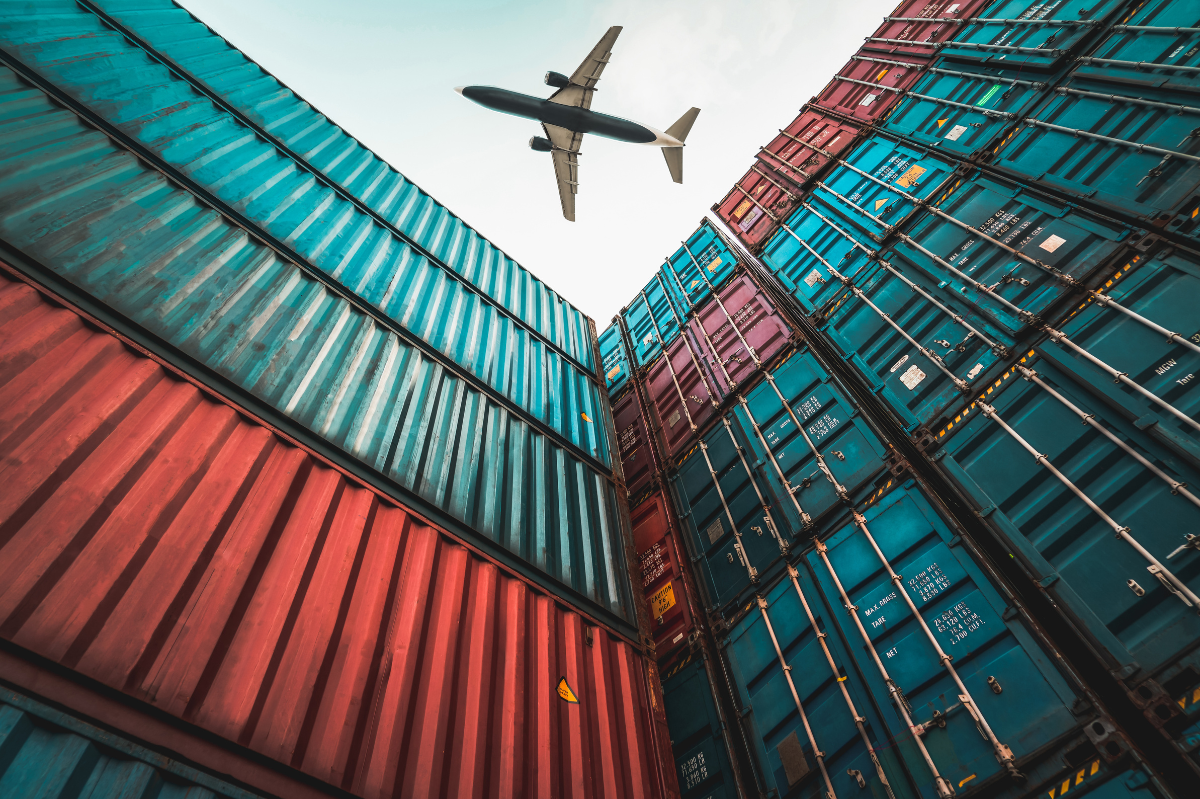For the last decade, fast shipping has dominated ecommerce strategy. Two-day delivery became the standard, and brands funneled resources into accelerating last-mile performance. But speed alone isn’t enough to retain customers, especially when shipping returns become the moment that defines the brand experience.
In today’s ecommerce environment, loyalty isn’t built on delivery time alone, it’s built on reliability, transparency, and ease of resolution, especially when the product needs to come back. Whether you’re dealing with local customers, supporting a retail location for in-person drop-offs, or coordinating an international shipment back to your fulfillment center, your post-purchase experience defines how your brand is remembered.
Leading ecommerce businesses are rethinking the post-purchase workflow, from how they print labels for returns, to how they import orders into their returns system, to how they manage flat rate return shipping options for simplicity and cost control.
1. Fast Shipping Isn’t a Differentiator Anymore, Returns Are
Shipping speed has become table stakes. Customers now expect 2-day or even same-day delivery from everyone, and most brands have responded. But when a customer initiates a return, the post-purchase experience either reinforces trust, or exposes operational gaps.
Keeping customers informed throughout the returns process is critical. Real-time tracking, transparent policies, and convenient options, whether that’s using a local retail location for drop-off or scheduling a courier pickup, are what define satisfaction in the modern ecommerce experience.
Most businesses still over-invest in outbound delivery and under-invest in the reverse flow. Yet 20–30% of ecommerce purchases are returned, and each one carries costs, operational friction, and a customer relationship at stake.
By designing a shipping returns strategy that considers local fulfillment, international reverse logistics, dynamic label printing, and streamlined order importation, brands can deliver not only speed, but a full-circle experience that builds loyalty after the sale.
Actionable Recommendations:
- Build SLAs for returns just like you do for deliveries (e.g., “refund initiated within 48 hours of receipt”)
- Track and benchmark return time from label generation → restock or refund
- Implement returnless refunds for sub-$X items where shipping cost > item value
- Provide clear details about the returns process, including step-by-step instructions and what customers can expect
2. Returns Aren’t a Cost Center. They’re a Retention Lever
Many operations teams treat returns as a necessary evil. But returns, when handled well, directly drive customer lifetime value (LTV). A frictionless, well-communicated return process increases repurchase likelihood, even after a negative product experience.
Offering tailored return solutions for business customers, such as streamlined processes and specialized support, can further increase loyalty and retention. Addressing the unique shipping needs of small businesses by providing flexible return options and support ensures these businesses can better serve their customers and remain competitive.
Supporting Data Points:
- 92% of customers say the ease of returns influences whether they buy again
- Brands that offer free, no-questions-asked returns see up to 3x higher repeat purchase rates
- Online sellers who streamline returns experience improved customer retention and more repeat purchases
- Most “serial returners” are also your highest-value customers, because they trust your post-purchase flow
Tactical Plays:
- Incentivize store credit over refunds by offering a 10% bonus on returns converted to credits
- Embed returns analytics into your RFM (Recency, Frequency, Monetary) models to identify profitable vs. unprofitable return behavior
- Segment returners by reason code and repurchase behavior to personalize return policies
- Offer multiple return shipping options to accommodate different customer preferences, such as expedited, standard, or carrier choice, increasing flexibility and satisfaction. Be transparent about any fee or fees associated with expedited or premium return options to ensure customers are aware of all potential additional costs.
3. Operationalize Reverse Logistics and Return Label Management with the Same Precision as Outbound
Most brands treat reverse logistics as a bolt-on function. But mature ecommerce operations teams apply the same rigor, rule-based automation, and data governance to returns as they do outbound shipping. Returns should not be an afterthought, they are a structured logistics flow that requires tight control over cost, speed, and visibility, including the efficient management of each shipment in the reverse logistics process.
Key Areas to Optimize:
A. Return Label Logic and Automation
Rather than manually issuing return labels, leading teams:
- Set preconfigured label rules based on product category, value, and geography
- Use dynamic label generation via API when customers initiate returns in a branded portal
- Match return labels to the nearest or most appropriate warehouse, not defaulting to a single hub
Example: A $20 t-shirt shouldn’t be routed across the country to a primary DC when a lower-cost local return hub can receive and process it within SLA.
B. Return Routing & Facility Load Balancing
Don’t assume all returns need to go to the main DC. Build logic that routes returns based on:
- Restock likelihood (e.g., resaleable vs. damaged)
- Facility availability or labor capacity
- SKU-specific processing requirements (e.g., repackaging, inspection)
C. Multi-Carrier Rate Shopping for Returns
Just as you rate shop outbound shipments, apply the same cost controls on return labels:
- Optimize carrier selection based on customer location and return urgency
- Leverage hybrid services (e.g., USPS > UPS handoff) to reduce reverse label cost
- Auto-detect ZIP-to-ZIP zones and assign the lowest-cost return option dynamically
D. Visibility, Tracking & Refund Triggers
Shipping software should offer event-based triggers in the return flow:
- Refund issued when package is scanned by the carrier (not only upon receipt)
- Auto-notifications to customers at each stage of return transit
- SLA tracking on return journey (label issued → in transit → processed → refunded)
Returns are not a black box, they should be visible, trackable, and measurable from the moment the label is created.
What High-Performing Ops Teams Do:
- Automate RMA (Return Merchandise Authorization) issuance using preconfigured rules (e.g., auto-authorize unworn apparel within 30 days)
- Route returns dynamically based on product type, restock likelihood, and warehouse proximity
- Integrate returns into your shipping software, not as a separate stack, this reduces API overhead and visibility gaps
Infrastructure Checklist:
- Multi-carrier return labels
- Return tracking APIs with SLA monitoring
- Refund/replacement auto-triggers tied to tracking milestones (e.g., scanned by carrier = initiate refund)
Strategic Payoff: Reverse logistics optimization can reduce manual return handling by 40–60%, saving labor and improving CX.
4. Packaging and Materials: The Overlooked Returns Experience Touchpoint
Packaging isn’t just about outbound protection, it’s a key control point in reverse logistics. Poor return packaging leads to damaged items, higher processing costs, and lost resale value. Smart ecommerce teams treat packaging as an extension of their returns strategy.
Best Practices:
- Design for Reuse: Use resealable mailers or dual-seal boxes with easy-return instructions to make re-packing simple for the customer.
- Match SKU to Packaging Risk: High-return items (e.g., shoes, apparel, electronics) should ship in packaging that supports reusability and safe return transit.
- Control Return Costs: Avoid oversized boxes that inflate dimensional weight on return labels. Optimize for both outbound and reverse shipping efficiency.
- Preempt Support Issues: Include return checklists, printed FAQs, or QR codes inside packaging to reduce “how do I return this?” tickets.
Thoughtful packaging reduces returns friction, protects your margin, and turns the return process into a brand trust builder.
5. Close the Data Loop: Returns Are an Operations Feedback Engine
Returns aren’t just a customer experience issue, they’re also a product and supply chain data source. The most mature ecommerce operations teams analyze return patterns to inform product development, sizing accuracy, packaging design, and supplier reliability. By examining return data, teams can identify trends by delivery area and use these insights to optimize delivery times for different regions.
Key Return Data to Capture:
- Reason codes (standardized and enriched with NLP for large-scale brands)
- Return rates by SKU, order channel, and fulfillment location
- Time-to-refund by carrier and customer region
Strategic Moves:
- Report return rates back to merchandising weekly
- Integrate return reason analytics with warehouse quality control
- Use high-return SKUs to flag inbound QA inspections or content updates
6. Design Returns as a Brand Asset, Not a Compliance Function
Amazon made returns simple, but impersonal. Most DTC brands win not by competing on speed or price, but by building trust through clarity, empathy, and convenience. Ensuring that returned items are delivered and processed promptly is crucial, if returns do not arrive as expected, customer trust can be damaged. Delivering a high-quality returns service is essential for maintaining customer satisfaction.
Design Principles:
- Offer pre-filled return portals with guided steps based on customer history
- Provide real-time tracking on return shipments, just like outbound packages
- Communicate clear refund timelines in advance, not reactively
Experience Enhancers:
- Smart routing: "Drop off at FedEx or schedule a pickup" options
- Dynamic thresholds: Waive return requirements for under-$X products to reduce reverse logistics cost
- Loyalty integration: Offer return-free exchanges or upsell opportunities inside the returns portal
CX Advantage: If your brand is known for an easy return process, customers take more risks on first purchases—boosting AOV.
7. Shipping Automation and Technology: Powering Seamless Returns and Loyalty
How Automation Streamlines Returns:
Shipping automation is transforming the way ecommerce businesses handle returns, making the process faster, more convenient, and cost-effective for both companies and their customers. By leveraging automated systems, businesses can generate shipping labels and return labels instantly, allowing customers to ship packages back with minimal effort.
This not only reduces shipping expenses but also ensures that returns are processed quickly and accurately, leading to instant savings and improved customer satisfaction.
Automation enables businesses to offer same day delivery and flexible return options, making the entire shipping and returns process more convenient. With automated workflows, packages are tracked seamlessly from the moment a return is initiated, and refunds can be processed as soon as the return label is scanned.
Tech Tools That Improve the Post-Purchase Experience:
Today’s ecommerce landscape offers a range of tech tools designed to enhance the shipping and returns experience for both online sellers and their customers. Real-time tracking platforms keep customers informed about the status of their shipments and returns, reducing anxiety and building trust. Ecommerce stores can also integrate chatbots and AI-powered support systems to provide instant answers to shipping questions, guide customers through the returns process, and resolve issues quickly.
Technology doesn’t just speed up fulfillment, it helps your team deliver high-touch, low-lift service at scale, especially in the post-purchase phase. Smart brands are using tools that increase visibility, reduce friction, and build customer trust.
For example:
- Branded tracking portals that display live updates for returns and refunds
- Self-serve returns hubs that let customers initiate, track, and manage returns without contacting support
- AI-powered assistants or chatbots to resolve basic inquiries like “Where’s my return?” or “Can I exchange this?”
Combined, these tools reduce WISMO tickets, support overhead, and friction during returns, while reinforcing brand reliability. Even if an order goes wrong, the customer still feels informed and supported.
Integrating Returns Data with Shipping Systems:
For ecommerce businesses aiming to optimize their shipping solution and reduce shipping costs, integrating returns data with shipping systems is essential. By analyzing returns data, companies can uncover valuable insights, such as common reasons for returns, packaging materials that need improvement, or shipping services that consistently deliver better results. This data-driven approach allows businesses to refine their shipping options, offer free packaging for select products, and adjust shipping rates to be more competitive and cost effective.
Key Metrics to Track:
- Return reason codes segmented by SKU and shipping method
- Carrier performance for return shipments (scan speed, SLA hit rate, damage on return)
- Packaging reusability and failure rate based on condition of returned items
By integrating returns data into your shipping software, you can:
- Flag high-return SKUs for better content or QC
- Adjust packaging and shipping methods to reduce damage
- Optimize return routing logic based on real-world carrier performance
Returns aren’t just a cost to absorb. They’re a feedback engine that informs better fulfillment, shipping, and product decisions.
Final Thoughts
Speed still matters, but only when the rest of the customer experience holds up. A failed delivery can be forgiven if the return experience feels effortless and fair. The best shipping solution is one that balances both fast delivery and a seamless returns process. Conversely, even the fastest shipping can’t make up for a chaotic, expensive, or frustrating return.
For ecommerce leaders, the most resilient brands will be those that:
- Invest equally in reverse logistics as outbound performance
- Treat returns as an extension of loyalty strategy, not just an ops task
- Leverage returns data as a continuous improvement engine
You can’t out-Amazon Amazon on speed, but you can build trust in ways they can’t. And in ecommerce, trust is what turns one-time buyers into brand loyalists.
Talk to our shipping experts at VESYL to optimize returns and post-purchase experience today.
Related Topics
Learn how VESYL can save you money on shipping
Not sure which plan suits you best? Have questions about our software? Contact our sales team for expert guidance.
.png)

.png)
.png)
.png)


